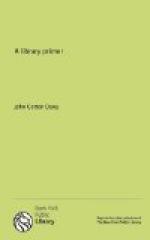CHAPTER L
Children’s room
In recent years a number of the larger libraries of the country have given up a portion of the delivery room, or a separate room entire, to the use of children. All of these special arrangements for children thus far reported have been successful. The plan that seems to give the greatest satisfaction, is to place in a room opening from the delivery room, and perhaps forming in effect a part of it, the books in the library especially adapted to the use of young people up to about 14 years of age. Such of these books as are not fiction are classified as closely as are the books in the main part of the library, and are arranged by their numbers on the shelves.
In this room the children have free access to the shelves. An attendant in charge gives special attention to the wants of the young visitors, and as far as possible gives guidance in the selection and instruction in the use of the books. A collection of reference books adapted to the young is sometimes added to the books which circulate.
Even in the very small library a corner for young people will usually be found an attractive and useful feature. It draws the young folks away from the main collection, where their presence sometimes proves an annoyance. It does not at all prevent the use, by the younger readers, of the books of the elders if they wish to use them, and it makes much easier some slight supervision, at least, of the former’s reading.
CHAPTER LI
Schoolroom libraries
“Schoolroom library” is the term commonly applied to a small collection, usually about 50v., of books placed on an open shelf in a schoolroom. In a good many communities these libraries have been purchased and owned by the board of education, or the school authorities, whoever they may be. If they are the property of the school board they commonly remain in the schoolroom in which they are placed. As the children in that room are changed each year, and as the collections selected for the different grades are usually different, the child as he passes through the rooms comes into close contact with a new collection each year. There are some advantages in having the ownership and control of these libraries remain entirely in the hands of the school board and the superintendent. The library, however, is generally the place in the community in which is to be found the greatest amount of information about books in general, the purchasing of them, the proper handling of them in fitting them for the shelves, cataloging, binding, etc., and the selection of those best adapted to young people. It is quite appropriate therefore, that, as is in many cities the case, the public library should supply the schools with these schoolroom libraries from its own shelves, buying therefor special books and often many copies of the same book.




